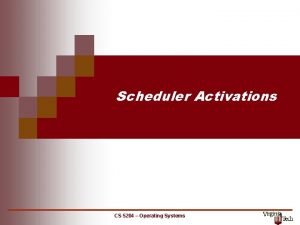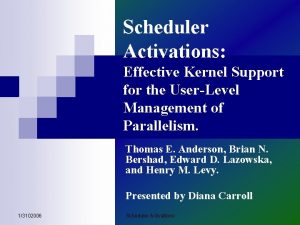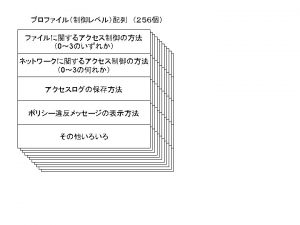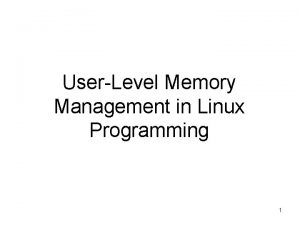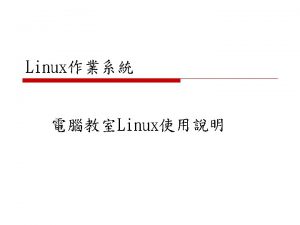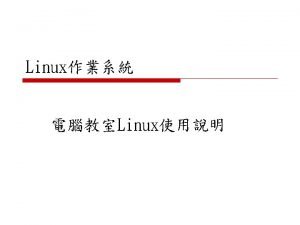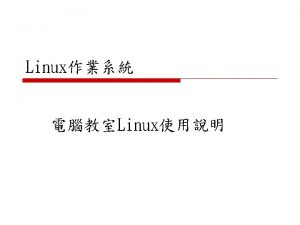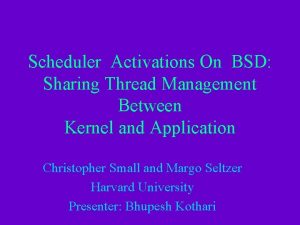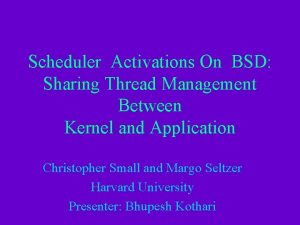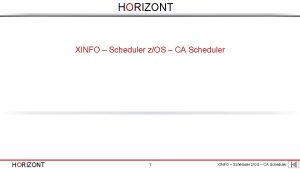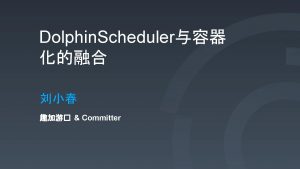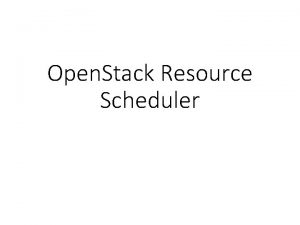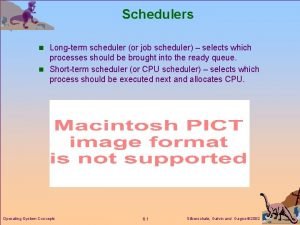Scheduler Activations Effective Kernel Support for the UserLevel



















- Slides: 19

Scheduler Activations: Effective Kernel Support for the User-Level Management of Parallelism. Thomas E. Anderson, Brian N. Bershad, Edward D. Lazowska, and Henry M. Levy. Presented by Diana Carroll 1/3102006 Scheduler Activations

User-level threads Divide up the process resources between threads. N: 1 arrangement, with N user threads sharing one kernel thread. Managed by runtime library routines. Require no kernel intervention. The thread package views each process as a virtual processor. Each virtual processor runs user-level code that pulls threads off the ready queue and runs them. 1/3102006 Scheduler Activations 2

Kernel-level Threads Kernel threads directly schedule each processes threads onto physical processors. 1: 1 arrangement, each application threads maps to one kernel thread. Enjoy direct OS support, so lack the problems that hinder user-level thread reliability. Too much overhead to use in many parallel programs. Performance isn’t as good as that of user threads. 1/3102006 Scheduler Activations 3

Dual Implementation User-level threads are implemented on top of kernel-level threads. Programmer has to choose: Performance (user-level threads) OR Versatility (kernel-level threads) Each type retains it’s problems and advantages. 1/3102006 Scheduler Activations 4

Advantages of User-level Threads Occupy the address space of the process, the kernel isn’t even aware of them. No overhead of kernel intervention when switching between threads. Not much more expensive than a regular procedure call. Flexible and amenable to specialization. Only need to meet the requirements of the specific applications that will use them. If priority scheduling is not needed, for example, leave it out. 1/3102006 Scheduler Activations 5

Disadvantages of User-level Threads There is a lack of kernel support in existing systems. The kernel is unaware of them. A process gets the same amount of time regardless of how many threads it is running. System is not able to make use of multiprocessors. If one thread blocks for a system call such as I/O, all the threads on the process are blocked too. Even if they are runnable. Kernel threads block, resume, and are preempted without the user level threads being notified. Page faults, I/O can block the whole process. Poor performance or cause errors. 1/3102006 Scheduler Activations 6

Example: I/O One application running five user-level threads. Performs inexpensive application-level context switches between threads. Thread 3 performs a system call for a file read(). Kernel blocks the whole process, including the remaining four threads that are waiting to run. Solution? Application intercepts system calls and substitutes an asynchronous (nonblocking) call. An asynchronous interface call appears to return control to the caller immediately. Results will arrive later. The remaining threads can now be run while thread 3 is blocked. Page faults cannot be predicted and mitigated, however, and will also result in the whole process being blocked. 1/3102006 Scheduler Activations 7

Advantages, Disadvantages of Kernel-level Threads Kernel is aware of the threads. Scheduler can assign time to processes based on the number of threads they carry. I/O, page faults, and interrupts are not a problem. Supports the needs of any application that runs it. Hundreds of times slower than user-level threads. Kernel threads use system calls to perform operations. Switching between threads requires a full context switch. Kernel threads are heavyweights, must support every need of an application. Each kernel thread consumes kernel memory. 1/3102006 Scheduler Activations 8

Problems with Implementing Userlevel Threads on top of Kernel-Level threads. “Kernel threads are the wrong abstraction for supporting user-level thread management. ” Kernel is neither aware of nor considerate of user-level threads. Performance problems result. Preempted user-level threads may hold locks, or worse, spinlocks. Processes waste time idling for the lock. A kernel thread blocks when its user-thread blocks. In an environment with a fixed number of kernel-level threads, a program can run out of kernel threads that aren’t blocked. Even though threads are ready and processors are idle. High-priority user-level threads may be preempted in favor of lowpriority user-level threads. Kernel doesn’t know the difference. 1/3102006 Scheduler Activations 9

Scheduler Activations Solution Structure to provide communication between the kernel processor and the user-level thread system. A scheduler activation: Takes the place of a kernel thread as an execution context for user-level threads. Notifies the user-level thread system of kernel changes. Provides space in the kernel for storing the processor context when the thread is swapped out. Kernel needs no knowledge of the data structures used at the user level. 1/3102006 Scheduler Activations 10

Scheduler Activations The kernel provides each user-level thread system with its own virtual processor. Kernel has control over how many processors to give. Each user-level thread system chooses which threads to run on it’s allocated processors. Kernel notifies the user-level thread system of any changes, through the scheduler activation. processors assigned, I/O interrupts, page faults. There always exactly as many running scheduler activations as there are processors assigned to the address space. 1/3102006 Scheduler Activations 11

Scheduler Activations, cont’d The user-level thread system notifies the kernel when it needs more resources. No changes for the application programmer, other than a performance improvement. Once a scheduler activation’s user-level thread is stopped by the kernel, that activation is done. A new activation will be created to notify the user-level thread system that it has been stopped. The user-level system continues on with it’s remaining processors. Just removes the state of that thread from the old activation. 1/3102006 Scheduler Activations 12

Managing I/O T 1: The application receives two processors to run on from the kernel. It starts running threads on them. T 2: One of the user-level threads blocks in the kernel. Kernel uses a fresh scheduler activation to notify the user-level system of this. T 3: The blocking-event completes. Kernel preempts second processor to do the upcall. Upcall notifies user level of upcall and of event completion. T 4: Upcall takes the thread from the ready list and begins running it. The first two scheduler activations have now been discarded and replaced. 1/3102006 Scheduler Activations 13

Processor Reallocations Processor reallocations are handled similarly, using preemption and an upcall to notify the user-level process. User-level can then choose which threads to run on it’s remaining processors. User-level notifies the kernel when its processor to runnable thread ratio is unbalanced. Of course it’s a bit more complicated than that. User-level system communicates thread priorities to the kernel, so lowerpriority threads are blocked. If a preemption or page fault happens to the user-level thread manager, it’s state is saved by the kernel as well. If a user-level thread is waiting on I/O, the kernel can resume thread temporarily when the I/O completes. 1/3102006 Scheduler Activations 14

Critical Sections A user-level thread can be preempted while it is executing a critical section. Could result in deadlock or performance drop. If a thread that has been preempted was executing a critical section, a user-level context switch is necessary. Thread continues temporarily, finishes its critical section, and then relinquishes control back to the upcall. Implemented by making a copy of each low-level critical section. In the copy, code is added to yield the processor back to the resuming thread. If a preemption occurs, the kernel resumes the thread in the corresponding place in the copy. 1/3102006 Scheduler Activations 15

Implementation Modified Topaz kernel thread management system to implement scheduler activations. Modified Fast. Threads to handle the user-level thread system. Processor allocation policy similar to Zahorjan and Mc. Cann’s dynamic policy. Processors are shared, guarantee that no processor idles if there is work to do. Priorities are respected. Allocator just needs to know which address spaces need more processors and which processors are idle. User-level applications are free to choose any thread scheduling policy they like. Discarded scheduler activations can be collected and returned to the kernel for reuse, avoiding the overhead of recreating them. Scheduler activations integrated into the Firefly Topaz debugger. 1/3102006 Scheduler Activations 16

Performance with I/O When I/O or other kernel involvement is involved, the modified version performs significantly better. Improvement especially dramatic in a multi-programmed environment. Upcalls were considerably slower than expected. Factor of five worse than Topaz kernel threads. Also infrequently used. 1/3102006 Scheduler Activations 17

Performance sans I/O The cost of user-level threads is almost unchanged. Small increases in time when the kernel must be notified. Application performance is similar in both the original and modified user-level thread systems. When minimal kernel involvement is required. When 100% if the memory space is available. 1/3102006 Scheduler Activations 18

Conclusion User-level threads divide up the processor without the kernel’s knowledge. Fast and flexible but degrade when I/O and other kernel activities get in the way. Kernel level threads Slow and expensive to use. Managing threads at the user-level is needed to achieve high performance. But kernel threads or processes do not support this well. Scheduler activations provide an interface between the kernel and the userlevel thread pacage. Kernel is responsible for processor allocation and notifying the user-level of events that affect it. User-level is responsible for thread scheduling and notifies the kernel of events that affect processor allocation decisions. 1/3102006 Scheduler Activations 19
 Scheduler activations in operating system
Scheduler activations in operating system Advantages of user level threads
Advantages of user level threads Boost mobile sales portal
Boost mobile sales portal Linux linux security module m1 support
Linux linux security module m1 support Effective support for families in essex
Effective support for families in essex Effective support for children and families in essex
Effective support for children and families in essex Grammatical signals
Grammatical signals Plagg i rom
Plagg i rom Datorkunskap för nybörjare
Datorkunskap för nybörjare Rita perspektiv
Rita perspektiv Ministerstyre för och nackdelar
Ministerstyre för och nackdelar Tillitsbaserad ledning
Tillitsbaserad ledning Vem räknas som jude
Vem räknas som jude Tack för att ni lyssnade bild
Tack för att ni lyssnade bild Claes martinsson
Claes martinsson Dikt fri form
Dikt fri form Nyckelkompetenser för livslångt lärande
Nyckelkompetenser för livslångt lärande Romarriket tidslinje
Romarriket tidslinje Mästar lärling modellen
Mästar lärling modellen Borstål, egenskaper
Borstål, egenskaper
